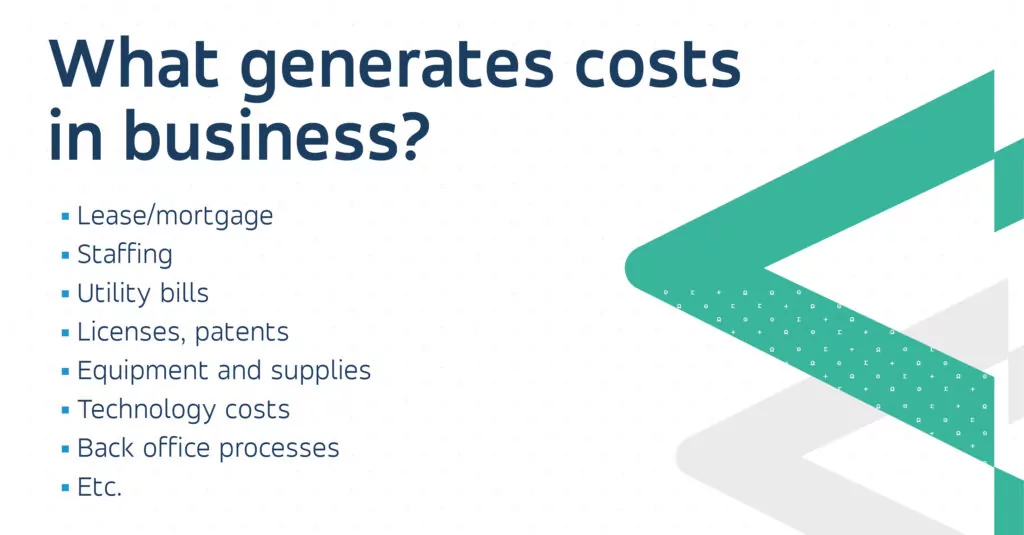The shift towards process digitization is fueled by business determinants. Introducing changes is necessary to meet the new objectives, hire the desired staff, and achieve new levels of efficiency. It enables us to deliver new products and services, and last but not least, remain competitive.
The digital transformation and its effects
Digital transformation, the process of employing digital solutions to improve the existing procedures or create new ones, design products, and services.
So much for theory.
In practice, it’s a journey companies embark on to prepare for the challenges in the modern world. Issues like generational shifts, lack of employees, entering new, more demanding markets, adjusting to changes in policies and regulations, and the strive to deliver better products. All of them require proper care, enforcing enterprises to introduce new solutions.
Since the shift takes place in the business world, reimagining processes should deliver tangible results. Can digital transformation reduce costs? In a nutshell, yes. Though, let’s try to elaborate on the subject a bit further.
What generates costs in business?

Can all the above factors be reduced? Most of them, yes. And the good news is that a significant share of the costs can actually be tackled by employing digital solutions. While real estate and managing properties are rather far from our expertise, we’ll focus on topics we have a solid background in.
Streamlining business processes with digital solutions
Digital technologies can be employed in nearly every area of business to bring the enterprise closer to desired results. Tech solutions are most commonly used in the following fields:
Management
From human resources (onboarding, training automation, familiarizing with procedures, monitoring progress), to performance and facility administration
Operations
Broadly understood automation of processes – document digitization, cloud services, transformation and optimization of procedures
Strategy
Utilizing insights from available data, analytics, automation
Bearing in mind the above, processes in most organizational areas can be automated. Ceding tasks to machines is not a miracle solution to all troubles, but the popularity of optimization stems from the genuine relief it provides. But let’s not get ahead of ourselves!
What are the cost-saving opportunities of digital transformation?
Reducing human workload
The workforce is relatively costly, taking into consideration wages, training, insurance, holidays, roughly all that adds up to hiring costs. Wasting human potential on repetitive, mundane tasks is inefficient, therefore, depending on the type of operations carried out, technology can take over activities traditionally carried out by employees. A programmed machine will perform tasks error-free, 24/7, freeing the professionals to focus on more challenging tasks.
What’s crucial – reducing human workload doesn’t equal redundancies. Aside from processes easy to automate, most structures require the human touch. Digital solutions allow to entrust employees with other, more demanding tasks.
Examples of ceding work to automation include, but are not limited to:
- laboratory automation
- lean production systems
- automated process monitoring
- robotic process automation
- assembling parts on conveyor belts
- filling out forms
- sorting documents
- responding to messages (e.g. chatbots)
- report generation
- email dispatch, marketing automation
Reducing errors
Eliminating errors and their consequences can be costly, especially when it comes to healthcare, automotive, and aviation – or any other area where a single fault can cause damage to machinery or endanger human life.
While human approach is still necessary to supervise the work carried out by machines, even in the most hi-tech environments, it can be successfully reduced in areas prone to errors. Automating tasks that do not require in-person attention is the easiest way to reduce mistakes. One who never failed at filling Excel spreadsheets should cast the stone first!). This also counts for seemingly more challenging work, like laboratory research. For instance, it takes highly trained personnel to recognize and count microbial organisms, many hours spent at the microscope affect attentiveness. Automated solutions can work efficiently 24/7 and assess thousands of samples error-free, hence, creating new opportunities for various industries.
One of the risk reduction opportunities is to include big data in the company’s operations. Enterprises conducting business in e.g. the medical field, generate and handle extensive data sets, processing of which not only gives answers to crucial viable questions but helps solve issues here and now. Patients’ diagnoses, medication dosing, disease spreading – all the information can be assessed more precisely with the help of algorithms, instead of relying solely on human analysis. The outcome? Improved overall patient satisfaction, more precise diagnoses, which results in a reduced number of faults that could lead to costly lawsuits.
Employing technology to mitigate the risk of errors can help not only optimize costs but also build a trustworthy, reliable image, allowing the company to maintain a steady market position.

Easier prototyping
The manufacturing process is preceded by several pre-production stages. Before a new product gains its physical form, the design process continues from the initial idea through CAD models to prototypes. Adding digital technology to the process, more precisely, augmented reality and digital twins, allows for significant shortening of the whole process.
Digital models of a newly created item or a machine allow designers to assess its properties in a more realistic way. Digital twins allow for not only visualization of the object, but also analysis of its future behavior and performance. A better feel of the object, more immersive experience of the properties, and, perhaps the most important from the cost reduction point of view – once changes to the model are sealed, amendments can be made immediately. Physical models, e.g. solid clay pieces used while designing new car models and versions, take more time and work than just adjusting the 3D model.
Predictive maintenance
Better safe than sorry, as the old saying goes. One of the ways digital transformation solutions can help with is securing machinery against malfunctions and downtimes. Digital solutions allow for responding to the service and maintenance needs before the actual necessity occurs. How come? AI algorithms and augmented reality solutions enable monitoring of equipment performance with the use of sensors, providing supervisors with predictions on the likelihood of malfunctions. Decreasing downtimes contributes to production continuity, reducing losses from halted processes.
Omitting operational costs
It’s safe to say that every company needs to develop, maintain, and secure its know-how to remain competitive. Onboarding and training, when conducted the traditional way, tend to be time and cost-consuming. Instructors, paper manuals, rented or maintained classrooms, oftentimes business travel – to name a few training-related costs. To an extent, these can be reduced or eliminated completely by implementing digital solutions.
Depending on the needs, it can be either a Learning Management System (LMS), allowing personnel to access courses anytime and anywhere they feel like learning, without the need to sit in the classroom. Augmented reality solutions display digital tutorials right before trainees’ eyes and automatically generate reports on the progress. They also introduce interactive tests and gamification models into companies’ competency-building processes. The possibilities are nearly endless but they all have a common denominator, which is: improving the efficiency of learning, while at the same time reducing costs and ensuring consistency of knowledge passed on.
Another solution for cost reduction no matter the industry is to switch from maintaining own servers to cloud services. Moving to virtual servers is nowadays not only a secure option but a highly adjustable one. Rates differ depending on the cloud service provider, but most often, you pay as you go, without the need of supporting extensive, unused resources. When your business (and computational needs) grow, your storage space can be easily adjusted. It works also the other way around – should you need to downscale your cloud (and the bills!) you may shrink it accordingly.
Is it worth it in the long run? Are digital transformation cost savings worth the hassle?
Transforming operations digitally has its challenges, obstacles, and costs. Introducing technology to the enterprise may come across initial resistance due to concerns about employment reduction or daily work becoming too complicated. Convincing staff to lean towards modern solutions requires attention from the management and facilitation of a modern, balanced environment benefiting from digital transformation.
While the introduction of new technologies requires certain investments (software, licenses, hardware, maintenance, operational costs covering e.g. communication and change management), the transformation costs are a long-time investment, the benefits of which will be paying off in the years to come.
Digital transformation, aside from costs, carries numerous advantages we’ve outlined above. But to fully benefit from its potential, companies need to define their goals. If you don’t know where you’re heading, any road can get you there, at least according to Lewis Caroll. The digital world slightly resembles Wonderland, yet still, we advise better preparation for the journey than Alice took. Before changing business processes and procedures, the organization should know what objectives to achieve and how to assess progress.
Can digital transformation reduce costs?
It’s important to remember that digital transformation is not a one-off action. The cost-saving operation starts with a well-thought-out strategy. It’s a process, and oftentimes – a longstanding one. Starting with recognizing the need, assessing risks and opportunities, finding a trustworthy transformation partner, implementing changes, and ending up measuring the effectiveness.
A majority of leaders across companies that transform digitally, declare their organization’s profitability improvement as a result of the well-executed implementation of technology into performed operations. Since digital transformation isn’t carried out just for the sake of it, companies need to calculate the efforts and their results. How to recognize the success of the digitization processes? Evaluating the impact of technology adoption goes way beyond the feeling of we made it. To learn more about assessing the business goals and performance indicators go to our article on measuring digital transformation.
Got questions about the digitalization opportunities of your industry? Let us know! We’ll go deeper into your processes and decide collectively which ones can be improved with technology. See how digital solutions can help you carry out your operations more productively and cost-effectively.





